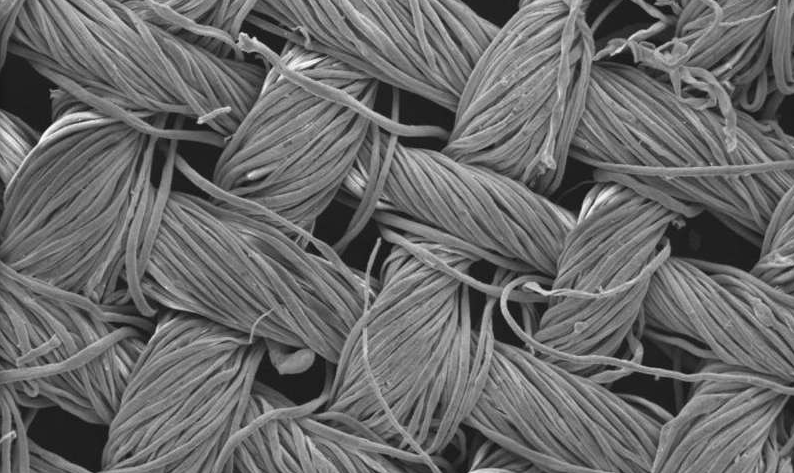Nano-enhanced textiles cleans itself — A new kind of fabric, which uses light to degrade the organic compounds that make up your filth, can’t be turned into clothes fast enough.
Developed by researchers from Royal Melbourne Institute of Technology at the University in Melbourne, Australia, the fabric contains nanostructures made from copper and silver. Unlike the anti-odor silver nanoparticles you might have been promised would keep your socks smelling fresh, these structures are actually grown directly into the cotton textiles that researchers have been experimenting with. Then they’re fixed in place by a dunk in several fixative solutions.
The work paves the way towards nano-enhanced textiles that can spontaneously clean themselves of stains and grime simply by being put under a light bulb or worn out in the sun.
Dr Rajesh Ramanathan said the process developed by the team had a variety of applications for catalysis-based industries such as agrochemicals, pharmaceuticals and natural products, and could be easily scaled up to industrial levels.
“The advantage of textiles is they already have a 3D structure so they are great at absorbing light, which in turn speeds up the process of degrading organic matter,” he said.
“There’s more work to do to before we can start throwing out our washing machines, but this advance lays a strong foundation for the future development of fully self-cleaning textiles.”
The researchers from the Ian Potter NanoBioSensing Facility and NanoBiotechnology Research Lab at RMIT worked with copper and silver-based nanostructures, which are known for their ability to absorb visible light.
When sunlight hits the metallic structures, high-energy electrons are released which can break down organic molecules. Experiments showed that deliberately placed stains disappeared within around six minutes. The research is published in Advanced Materials Interfaces.

When the nanostructures are exposed to light, they receive an energy boost that creates “hot electrons”. These “hot electrons” release a burst of energy that enables the nanostructures to degrade organic matter.
The challenge for researchers has been to bring the concept out of the lab by working out how to build these nanostructures on an industrial scale and permanently attach them to textiles.
The RMIT team’s novel approach was to grow the nanostructures directly onto the textiles by dipping them into a few solutions, resulting in the development of stable nanostructures within 30 minutes.

When exposed to light, it took less than six minutes for some of the nano-enhanced textiles to spontaneously clean themselves.
“Our next step will be to test our nano-enhanced textiles with organic compounds that could be more relevant to consumers, to see how quickly they can handle common stains like tomato sauce or wine,” Ramanathan said.

